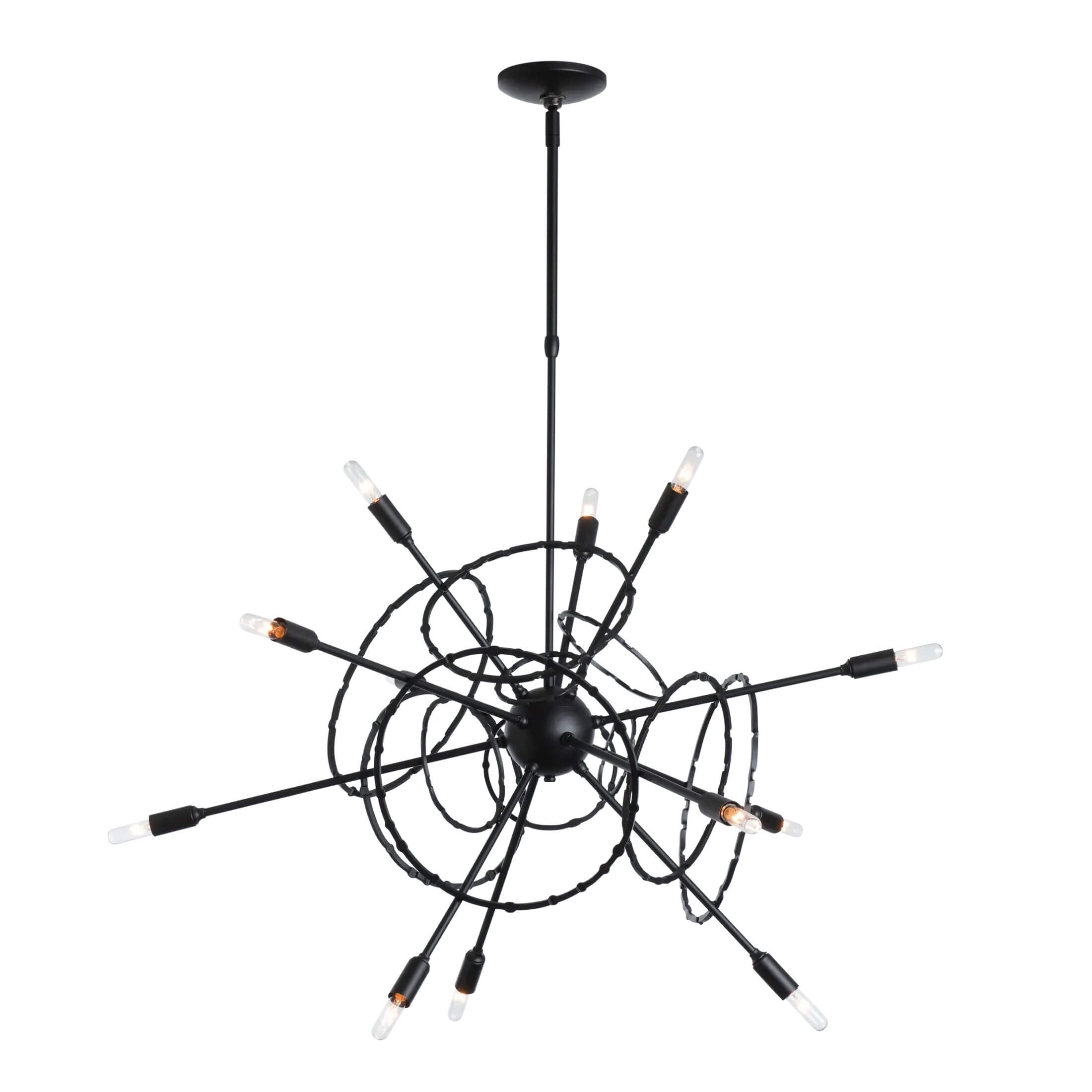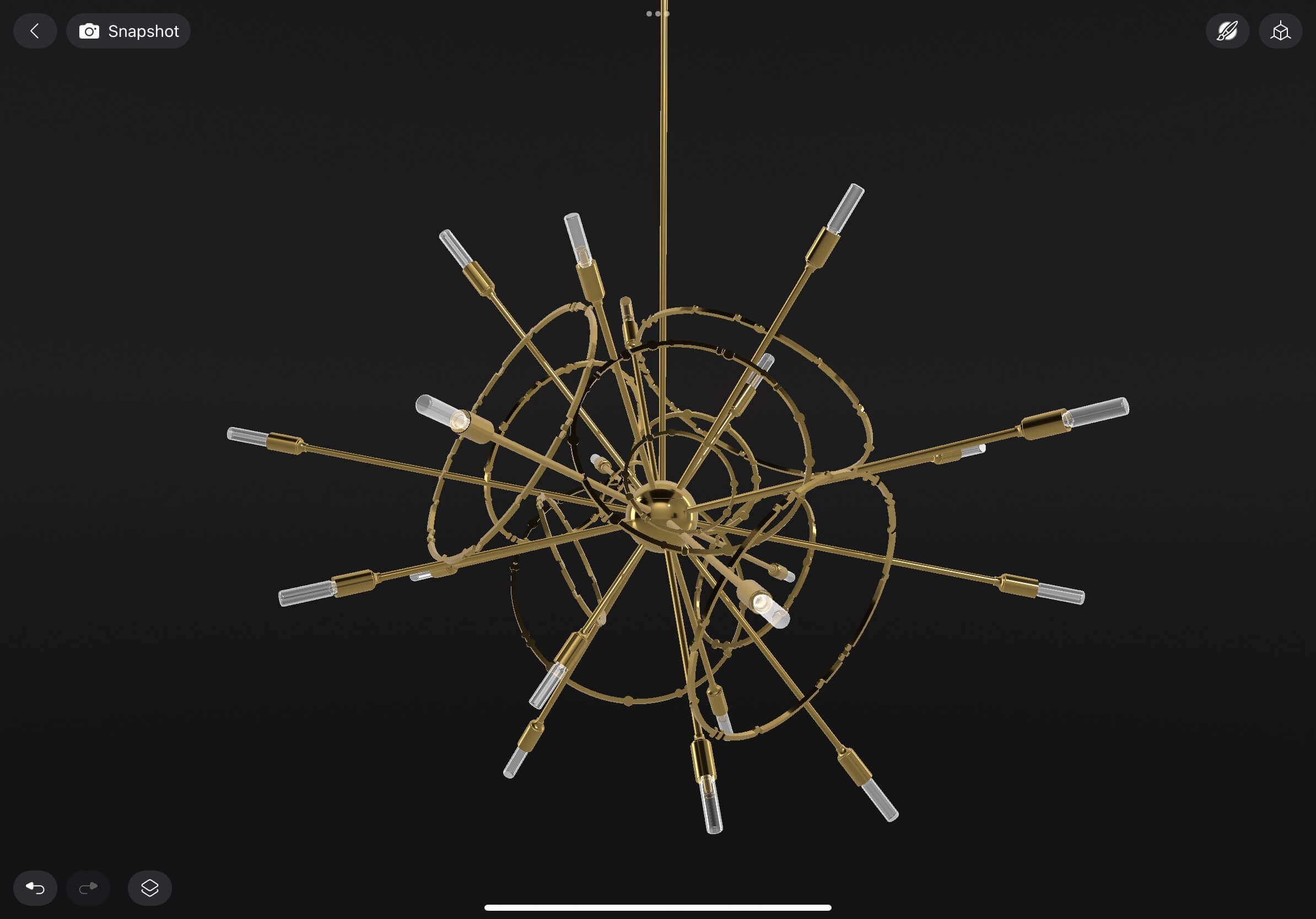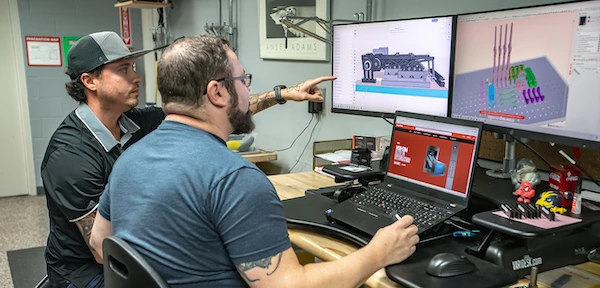
Overview
Senior Designer at Hubbardton Forge, David Martin takes on designs that limited tools once made impossible to execute. A few years ago, he switched from using 2D AutoCAD drawings and hand-built models to creating full-fledged 3D models with Shapr3D. Since then, he has increased concepting and production speed due to his improved ability to construct and communicate design intent clearly.
This has translated into the conservation of time and resources. David estimates a 30% time savings in getting products to market and has launched 30+ products designed in Shapr3D. Take a look at his products and experiences developing them in this success story.
Why Shapr3D
David has progressively turned to Shapr3D to conceptualize faster and to build products more efficiently with smoother cross-team collaboration. David finds Shapr3D intuitive and quick. Previously, he invested a lot of time in drafting multiple views of a model in 2D or building simple mock-ups using cardboard, foam or other materials. Now creating a 3D model is like a reflex that lets David show his ideas easily.
For David, communicating his ideas using Shapr3D Visualization and Augmented Reality is key. This boosts collaboration internally, and it also supports the design, sales, and marketing teams in understanding how a product will look in real life in an actual physical environment.

Challenges
- Ideas get scrapped because it's difficult to convey and assess them through technical drawings
- Creating a physical concept for prototyping can be slow and inaccurate, wasting time and funds
- Getting buy-in from decision makers using technical drawings requires a lot of time and effort
Solutions
- Expanded freedom to innovate & iterate with instinctive CAD
- Clear design intent improves team prototyping speed & accuracy
- 3D design tool to increase buy-in & cut prototyping costs
About Hubbardton Forge & David
Hubbardton Forge is a design and manufacturing company that introduces 60-120 new decorative lighting fixtures and home furnishings each year. The company’s product line includes about 600 pieces, all made to order. David Martin, the Senior Product Designer, works alongside a team of six product designers.
Together, they collaborate closely with the 3-member engineering department and 13-member prototype and tooling department. With these departments and sales, creative, customer service, supply chain, manufacturing information systems, human resources, administration, and accounting collectively making up a third of the company, the remaining two-thirds carries out manufacturing.
"I came across Shapr3D and said, 'Whoa, for an iPad? This is something different.' I decided to do a trial and loved it. I found it very intuitive. No one had to tell me how to use it. It was like it was already in my brain."
David launches a product line he previously tabled
Hubbardton Forge recently launched the Olympus family of products, a line created by David. The idea for the decorative element of a forged ring characteristic to the line had come to David almost a decade ago. At the time, David didn’t have a modeling tool to turn to in order to conceptualize the complexity of the idea. Without the prospect of enough buy-in, he tabled the idea.

Once David realized how quickly he could learn and use 3D modeling with Shapr3D, he revisited the concept. He experimented with forging techniques on a metal ring with part prototypes and went on to draft 3D models of a line of fixtures incorporating the element.
Shapr3D allowed him to convey the complex geometry that formed the basis of all the designs with complete accuracy. Engineering and prototyping were then able to go through the vetting process of doing tool tests, process trials, and preparing for delivery much more seamlessly. Together, the team was able to improve the process of how they built products together.
“As I was working with Shapr3D, it occurred to me that I could work with that idea and create these designs. It was pretty complex to figure out the locations of the rings. It was a godsend to have Shapr3D to be able to do this. To even try to convey this to the toolmaker with 2D Drawings would have been a significant challenge. Being able to stand next to them while they worked on a hand-built prototype AND an AR model made it so much faster.”
Rechanneling resources into innovation & delivery
Previously, the engineering and prototyping teams had to work to develop complex ideas based on technical drawings. This made the assessment process lengthy and confusing while the prototyping process was unpredictable. Trying to match a prototype to a 2D model left room for error and made mapping out a product timeline difficult.

Now that David can naturally model his ideas in 3D, he can construct his ideas exactly how he imagined. This enables them to develop designs much further, more quickly, and cheaply before the company invests money in prototyping or tooling. The team can do side-by-side comparisons with a prototyped model with the 3D model in Augmented Reality.
“I could look at the mockup in metal of the actual rings next to the Shapr3D model and say, ‘Actually, that ring needs to turn a little bit more that way.’ To be able to just have it on an iPad and walk around and look at it and show it to the toolmaker. It just blows my mind. How did we do this in the days before Shapr3D?”
The company’s 12-month cycle of creating new products makes time saved in the concepting phase greatly beneficial to speeding up overall production. Since modeling with Shapr3D was instinctive for David, he was able to execute his ideas more accurately for an overall faster concept phase. 3D modeling with Shapr3D helps the company more accurately pinpoint a viable design.
Just this past year, the company hit preparation targets well ahead of schedule for their launch, enabling them to sell the new product line immediately at time of introduction. This had an overall domino effect, benefitting the company’s bottom line in multiple ways.
“With Shapr3D, we’re handing [the engineers] something that’s already 3D which makes it a lot easier to make sure that they’re following what our intent is. We can communicate what our intent is a lot easier with a 3D model than we can with 2D Drawings.”
3D design serves as an upstream & downstream buy-in tool
David now finds it much easier to achieve buy-in for his ideas and has saved on company costs and time as a result. Using 3D modeling and Shapr3D Visualization in combination with a multidevice workflow allows him to communicate products to up-stream and down-stream customers.

Before moving a concept into production, the design team meets with other stakeholders including the CEO, marketing, and Head of Sales. Previously, achieving buy-in based on a 2D drawing was challenging - the stakeholders couldn’t get a clear idea of the product, thereby limiting their capacity to make an informed decision on how to allocate time and resources in production.
Now David utilizes the portability that comes with Shapr3D’s multidevice capacity to share his designs in meetings. He’ll pull up a 3D rendered view of his model in Visualization and pass his iPad around to stakeholders for them to zoom in and out and pan the model around to get a full 360 view of all the details.

David also uses Augmented Reality to show the model in the room. He can also present multiple variations in a short time frame which allows the team to get to decisions much faster. Showing a model in real scale and space using Shapr3D Visualization and AR gives the stakeholders a clear view of the model and significantly increases approval rates.
In the past, the company would have gone through 5-6 prototypes, waiting 1-2 weeks for a completed prototype. Now since using Shapr3D, the company has halved prototype creation to achieve an overall 15% cost savings in prototype production.




